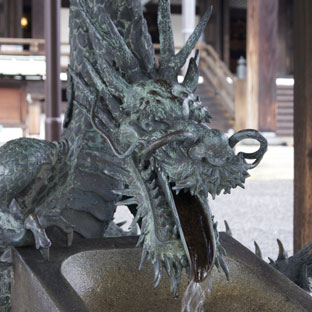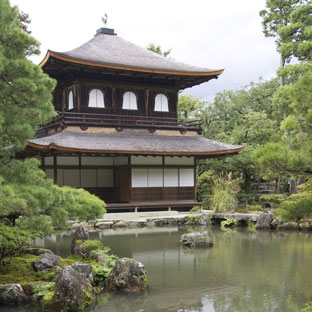Red

Red ruffed lemurs reach sexual maturity at about 2 years of age, and start reproducing at about 3 years of age.[5] Unlike all other diurnal primates,[7] females keep their infants in nests 10–20 meters above the forest floor, made with twigs, leaves, vines, and fur. Like all lemurs, and many Madagascan mammals, it has a fixed breeding season which takes place towards the end of the dry season (May to July).
This is so the young can be born in the wet season when more food is available. Ruffed lemurs are also the only primates with litters of young, and, after a gestation period of 102 days, the female may give birth to up to six, although two or three is more typical. Newborns have fur and can see, but as they cannot move, the female leaves them in the nest until they are seven weeks old. Females can nurse up to six infants at the same time. Infant red ruffed lemurs are not as well developed at birth as other lemurs. This is not surprising because red ruffed lemurs have extremely short gestation periods. At birth, infants are not able to hold onto the mother. When she moves the infants she picks them up one by one. Mothers usually move their infants away from the nest after a week or two.

When she forages she leaves her infants in a nearby tree. In the few days after she gives birth, if the mother needs to leave the nest, the father will stand guard.[11] Weaning occurs at four months.[8] It is estimated that 65% of young do not reach three months of age, and often die by falling from the trees. The red ruffed lemur is a very clean animal and spends a lot of time grooming itself and in social grooming. The lower incisors (front teeth) and the claw on the second toe of the hind foot are specially adapted for this behavior.
The red ruffed lemur (Varecia rubra) is one of two species in the genus Varecia, the ruffed lemurs; the other is the black-and-white ruffed lemur (Varecia variegata). Like all lemurs, it is native to Madagascar and occurs only in the rainforests of Masoala, in the northeast of the island.[1] It is one of the largest primates of Madagascar with a body length of 53 cm, a tail length of 60 cm and a weight of 3.3–3.6 kg. Its soft, thick fur is red and black in colour and sports a buff or cream colored spot at the nape, but a few are known to have a white or pink patch on the back of the limbs or digits and a ring on the base of the tail in a similar color.
Ruffed

Red ruffed lemurs reach sexual maturity at about 2 years of age, and start reproducing at about 3 years of age.[5] Unlike all other diurnal primates,[7] females keep their infants in nests 10–20 meters above the forest floor, made with twigs, leaves, vines, and fur. Like all lemurs, and many Madagascan mammals, it has a fixed breeding season which takes place towards the end of the dry season (May to July).
This is so the young can be born in the wet season when more food is available. Ruffed lemurs are also the only primates with litters of young, and, after a gestation period of 102 days, the female may give birth to up to six, although two or three is more typical. Newborns have fur and can see, but as they cannot move, the female leaves them in the nest until they are seven weeks old. Females can nurse up to six infants at the same time. Infant red ruffed lemurs are not as well developed at birth as other lemurs. This is not surprising because red ruffed lemurs have extremely short gestation periods. At birth, infants are not able to hold onto the mother. When she moves the infants she picks them up one by one. Mothers usually move their infants away from the nest after a week or two.

When she forages she leaves her infants in a nearby tree. In the few days after she gives birth, if the mother needs to leave the nest, the father will stand guard.[11] Weaning occurs at four months.[8] It is estimated that 65% of young do not reach three months of age, and often die by falling from the trees. The red ruffed lemur is a very clean animal and spends a lot of time grooming itself and in social grooming. The lower incisors (front teeth) and the claw on the second toe of the hind foot are specially adapted for this behavior.
The red ruffed lemur (Varecia rubra) is one of two species in the genus Varecia, the ruffed lemurs; the other is the black-and-white ruffed lemur (Varecia variegata). Like all lemurs, it is native to Madagascar and occurs only in the rainforests of Masoala, in the northeast of the island.[1] It is one of the largest primates of Madagascar with a body length of 53 cm, a tail length of 60 cm and a weight of 3.3–3.6 kg. Its soft, thick fur is red and black in colour and sports a buff or cream colored spot at the nape, but a few are known to have a white or pink patch on the back of the limbs or digits and a ring on the base of the tail in a similar color.